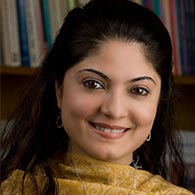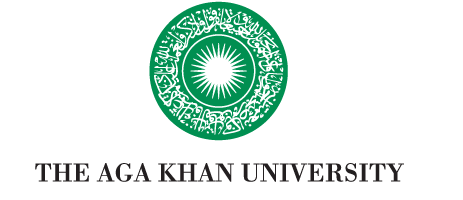Salimah Meghani SONAM ’97
 Dr. Salimah Meghani is a graduate of the SONAM Classes of 1992 (Diploma) and 1997 (BScN). Salimah is Professor of Nursing and Craig M. Wasserman Term Chair of Palliative Care at the University of Pennsylvania. She is also Associate Director of the University’s New Courtland Center for Transitions and Health and Senior Fellow at its Leonard Davis Institute of Health Economics.
Dr. Salimah Meghani is a graduate of the SONAM Classes of 1992 (Diploma) and 1997 (BScN). Salimah is Professor of Nursing and Craig M. Wasserman Term Chair of Palliative Care at the University of Pennsylvania. She is also Associate Director of the University’s New Courtland Center for Transitions and Health and Senior Fellow at its Leonard Davis Institute of Health Economics.
Salimah conducts research on both palliative care and the social determinants of health, “two layers of vulnerability embedded in the context of the complex healthcare system.” She has received a number of highly prestigious National Institutes of Health (NIH) grants; indeed, she is currently one of the University of Pennsylvania School of Nursing’s “10 most productive” researchers in significant gross overhead contributions. Her innumerable scholarly articles have appeared in the most esteemed journals in the field, including The Journal of the American Medical Association. Her interviews and primary-authored research have been featured in The New York Times, The Washington Post, and other major news outlets. She has also served on several committees of the National Academy of Medicine. In 2021, the leading professional palliative care organisation in the U.S., The Hospice and Palliative Nurses Association, awarded Salimah its Distinguished Nursing Researcher Award.
Salimah is quite as accomplished a teacher and mentor as she is a researcher. In 2021, she received the Christian R. and Mary F. Lindback Award for Distinguished Teaching, the University of Pennsylvania’s preeminent teaching award. Only eight faculty members — out of over 1,400— receive the Lindback Award each year.
Salimah is a Fellow of the American Academy of Nursing.
Would you please tell me about your childhood?
I grew up in Karachi. My mother was an English teacher: she valued education greatly. I was a nonconformist teenager¬ and an oblivious student. But my mother had big dreams, and a vision, for me. His Highness encouraged women to go into nursing, and that was enough for my mother: she brought me the SONAM application, which we filled out and submitted the very last day it was due.
What was being a SONAM student like?
I was awestruck by the beautiful AKU campus and the hostel life. At first, I didn’t take my studies particularly seriously. In my second year, however, I underwent a sustained transformation. One of my professors was Zeenat Kanji; she had a reputation of being a hard taskmaster, quite demanding. I truly feared failing her pediatric clinical rotation and losing my newfound sense of independence: I now studied seriously for the first time. She believed in me, and I needed that affirmation from a tough mentor. The self-assurance I developed in that clinical rotation carried with me for the remainder of my time at AKU — and afterwards at the University of Pennsylvania.
SONAM had two sections in 1992, Florence and Nightingale; I don’t remember the exact size, but each section had a very large number of students, about a hundred. We were a supportive cohort and had — how shall I put it? — healthy competition. We were learning things at a very high level. The programme gave the lie to the low status of nursing at the time, showed us how wrong an assigned status could be. Most of the students in my cohort were exceedingly bright: they could have been anything — engineers, physicists, and so on.
I earned my Diploma in 1992, worked for two years in the Post Anesthesia Care Unit, and earned my BScN in 1997.
What did you do after graduating?
I taught for two years at SONAM. At that time, the BScN was the highest degree available to nurses in Pakistan. I applied to several top advanced-practice nursing programmes in the U.S.: to my surprise, I was accepted to all of them. I had the audacity to choose an Ivy League university, the University of Pennsylvania, which remains the number-one ranked nursing programme in the world. In my very first meeting with my advisor, Dr. Anne Keane, she said, “We need to get you into the Ph.D. programme.” She was a highly regarded professor — who also turned out to be a strong and steadfast mentor. She remained committed to me, to my success, and provided unwavering mentorship throughout my studies at the University; she later served as my Ph.D. dissertation advisor.
Despite my having scholarships from both AKU and the Aga Khan Foundation, funding such an expensive education was hard. I did little else but work: I was both a teaching and research assistant and worked 12-hour night shifts Friday, Saturday, and Sunday in a bone-marrow transplant unit — on top of attending classes and studying. In spite of all this, I was somehow able to maintain top grades in my cohort. In retrospect, I learned quite a lot about myself, about my capacity for hard work and my aptitude for the field. In truth, AKU prepared me so well for the rigor and high academic standards of an Ivy League university that I found all I was doing somehow manageable.
What was your Ph.D. dissertation on?
My dissertation interests also stemmed from my experiences at SONAM. During my BScN, I was exceedingly fortunate to learn from an inspirational teacher, Grace Stanley, a Canadian expert who introduced me to the field of palliative care. During a clinical experience in a hospice setting, I saw that opioids were not available to alleviate patients’ cancer-related pain — and that patients were dying in horrific pain as a result.
I carried that experience with me. In my Ph.D. programme, I chose to study how government and international policies affect medical opioid availability. I wanted to conduct my fieldwork in Pakistan, but after 9.11 could not: it was simply too difficult to go back and forth between the two countries. My advisor challenged me to find a parallel in the U.S., and so I studied the issue of provider-level bias and structural barriers to equitable pain and symptom outcomes in seriously ill patients. I combined all this with my study of bioethics.
Over time, I earned a Ph.D. and two master’s degrees, one in Advanced Practice Nursing, the other in Bioethics.
What did you do once you earned your Ph.D.?
I was offered a two-year post-doctorate at the University’s Center for Health Equity Research. I was then accepted as a faculty member at the University of Pennsylvania, even though it only rarely ever hires its own graduates. Dr. Afaf Meleis was the celebrated dean of the School of Nursing at the time. [Dr. Meleis is a Trustee of AKU.] Early on, I received an NIH mentored training grant for “early investigators” (that is, researchers who have yet to become independent NIH investigators). On a lark, I then applied for a highly competitive NIH Challenge Grant. To my colleagues’ amazement, I received the grant, which was typically for more seasoned investigators and had the daunting success rate of less than one percent (fewer than 240 grantees out of 24,000 applications). This grant, together with my research and scholarship, led to my receiving tenure at the University within only four years of my first becoming a faculty member.
You are an exceedingly accomplished researcher, but you also clearly love — and are superb at — teaching.
I love teaching and mentoring quite as much as I do research. In research, it takes five years or so till you can make a strong contribution. In teaching and mentoring, your impact is immediate.
Are you still involved with AKU?
Yes, I have been involved with AKU in various capacities. From 2011-2014, as a TKN volunteer I served as an external examiner, chairing 33 master’s theses at SONAM. A master’s was the terminal nursing degree in Pakistan at the time, and these students were incredible: many of them conducted the kind of research studies that our Ph.D. students here are conducting — except that the SONAM students were conducting these studies with far fewer resources. More recently, I was a member of the search committee for the new Dean of SONAM.
You will leave a “legacy gift,” a gift from your estate, to AKU: why will you do so?
I am giving back, yes — but I hasten to add that I would not give back to a place I did not have complete faith in. I do have complete faith in AKU, in its using my gift in the best possible way. His Highness’s vision is magnificent — but he combines that vision with rigor. AKU is such a promising institution: it is making great contributions both locally and globally. I am confident that the funds, my future gift, will be used well.
I have directed that my gift create an endowed fund to support and grow SONAM’s research and innovation portfolio. I value research greatly: I see wonderful possibilities at SONAM to improve the health and well-being of individuals and communities through research — and the translation of that research into practice and policy.
A note on endowed funds
An endowed fund is invested in AKU’s general endowment, which is the investment portfolio of the University. The endowment — and so each of the endowed funds within it — pays out approximately five percent of its value each year, supporting everything the University does — teaching, research, financial aid, and on and on. Quite simply, the payout from the endowment is the lifeblood of AKU: the University could not function without it. The endowment — and the endowed funds within it — will exist as long as AKU exists.
An endowed fund, then, is like a “miniature endowment:” it, too, exists forever, and it, too, pays out five percent or so of its value each year. A donor can name an endowed fund after himself or herself, a family member, or anyone else he or she might wish to honour and memorialise. What is more, an endowed fund grows over time, with the endowment as a whole, thus increasing the good it does.

